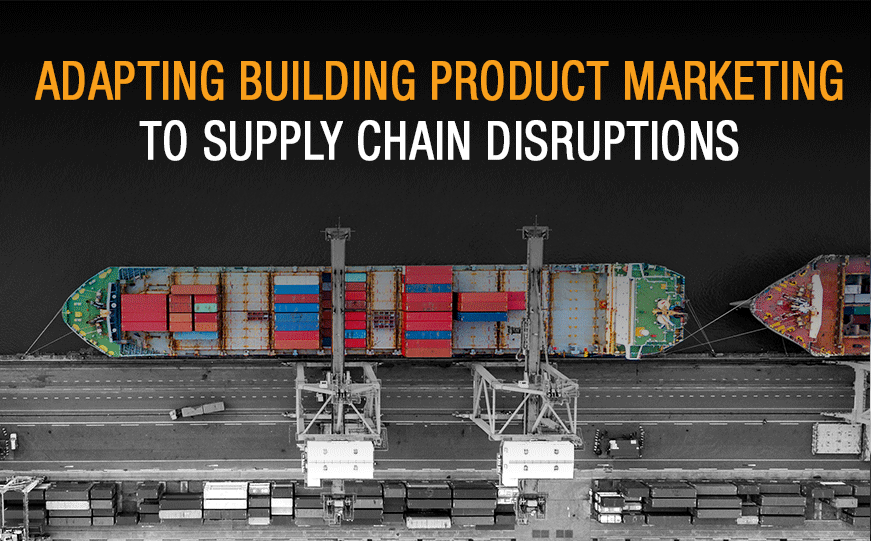It’s not news that the supply chain is experiencing unprecedented challenges.
Now that the holidays are upon us, the supply chain is under even more pressure to “deliver the goods.” And consumers are facing another holiday season rife with shortages and delays. These market factors are also impacting the B2B channel.
All of these woes begin and end with shifts in consumer behavior that emerged during the pandemic. While many saw the rush to embrace online shopping as a temporary response to an unexpected situation, online shopping has become the new normal.
More people are shopping online — and expecting shorter delivery windows. According to data from the U.S. Census Bureau, e-commerce sales increased by 43 percent between January 2020 and January 2021… and by another 14 percent in 2021. As we head into 2023, this growth pattern is expected to continue.
However, the supply chain issues haunting e-commerce and logistics may see some reprieve soon. During the first week of December, the Institute for Supply Management (ISM) stated that order backlogs are beginning to ease — as a function of improving supply chains. Supplier deliveries are also improving — indicating faster deliveries to factories.
Despite these minor improvements, the supply chain is an interconnected system, and the trifecta of labor shortages, manufacturing constraints and shipping delays has gummed up the works in ways never experienced before.
Marketing building products in this environment is a challenge. Now more than ever before, it’s vital that B2B marketing teams adapt their strategies to react quickly to an ever-changing situation — with top-notch finesse, fast execution and a customer-centric approach.
Here are three ways marketers can prepare for what’s ahead. Maintaining these practices once conditions improve will help to ensure ongoing success.
Keep customers up to date
Whether building product brands are waiting for new materials or components to arrive, facing delayed production, or working around labor shortages, it’s critical to deliver timely, honest updates to customers.
For example, imagine a company is launching a new flooring line. The packaging coming from China is stuck on a boat, impacting production… and deliveries of finished product. This delay not only affects the manufacturer, but also the wholesaler where the product is sold… because the space in the wholesaler’s warehouse reserved for the product now sits empty.
Hope and “waiting to see” aren’t winning strategies in a case like this. Instead, the company would be wise to proactively communicate delays throughout its entire line of shippers, wholesalers and distributors, sharing estimated delivery dates wherever possible. And then provide regular status updates.
Being upfront gives customers time to prepare for delays and make alternative plans… supporting a foundation for a trusted partnership and brand loyalty. Failure to be transparent when it comes to supply chain issues can quickly damage business relationships and tarnish a brand’s hard won reputation.
Invest in a solid content strategy
In times of uncertainty, it’s reassuring to hear from leaders. An email or blog post from a CEO or C-suite executive, that addresses head on current supply chain challenges and the steps the company is taking can be powerful.
This kind of thought leadership positions executives as knowledgeable experts on supply chain challenges — keeping customers in the loop and educating prospects in the process… while helping to instill confidence in the company.
If your company publishes a weekly or monthly customer newsletter, consider adding a section that speaks directly to shipping and distribution issues, so customers know where to find the latest information. Promote these updates on the website and across social platforms.
Build a website that works
These days, it goes without saying that a website is a brand’s most important digital asset — a hub for customers and partners, and a place to educate, inform and share the latest product and company news, including supply chain updates.
In addition to regularly refreshing your website, make sure to leverage landing pages and online forms to capture “opted-in” email addresses from site visitors. Email campaigns are a time-tested lead generation strategy… and building a clean, up-to-date email list can be an invaluable marketing tool.
If you don’t have a chat service on your site, consider adding one. A number of live chat platforms with advanced, AI-powered features are available. During office hours, have customer service or business development representatives respond to requests and questions in real-time. This not only delivers a personal touch, but also provides valuable insights from the frontlines… while building authentic experiences with customers and prospects.
Supply chain challenges are global issues with local repercussions. With a healthy dose of transparency and honesty, these issues can be navigated successfully — and building product brands can continue to grow.
Are supply chain problems impacting your brand? If so, maybe it’s time to consider investing in a thought leadership and content marketing strategy. Send an e-mail to sk@kleberandassociates.com to get the conversation started.




